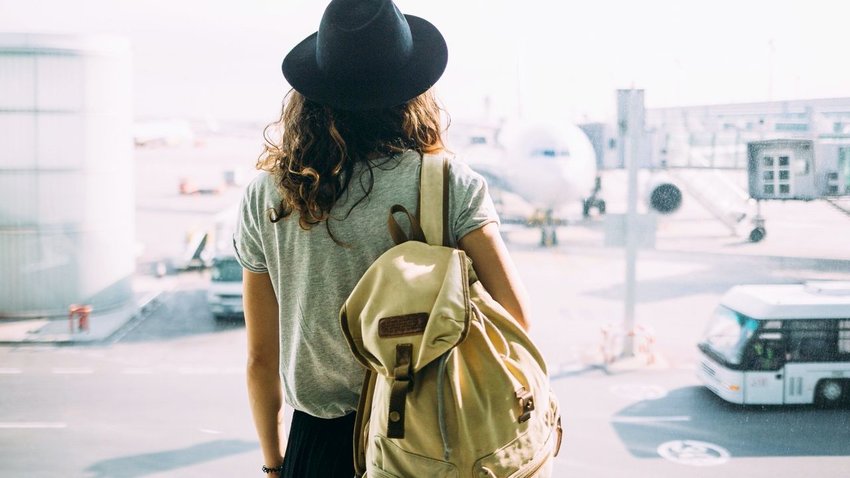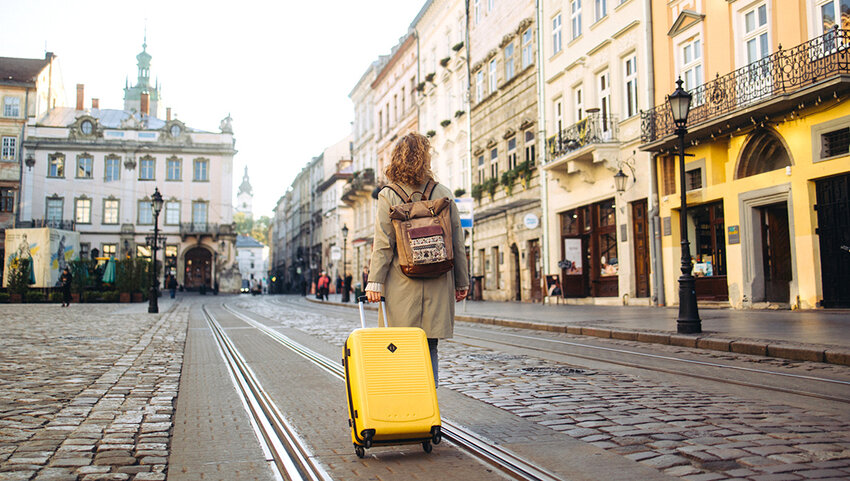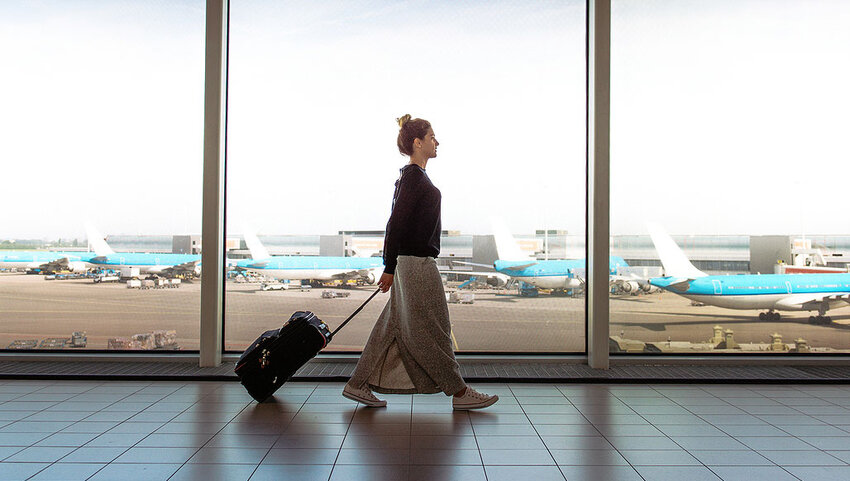In recent years, the number of passengers bringing rolling suitcases aboard flights has increased dramatically. Where once we’d have been content to check our luggage, ever-increasing checked bag fees and fears of losing luggage have meant that many of us now prefer to carry our luggage aboard at all costs. But the new, post-COVID world of air travel might change all that.
Keep Abreast of Government Guidance
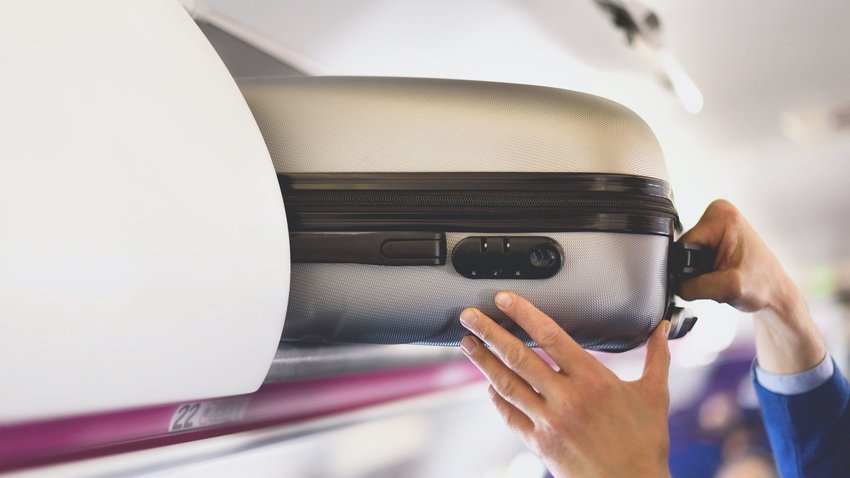
As lockdowns ease and European air travel begins in earnest, the UK government’s Department for Transport issued advice that passengers should try, where possible, to check baggage and avoid taking it on board. In guidance published on June 11, it stated:
“You are strongly encouraged to check in baggage to the aircraft hold and minimise any hand baggage. This will speed up boarding and disembarking and minimise the risk of transmission.”
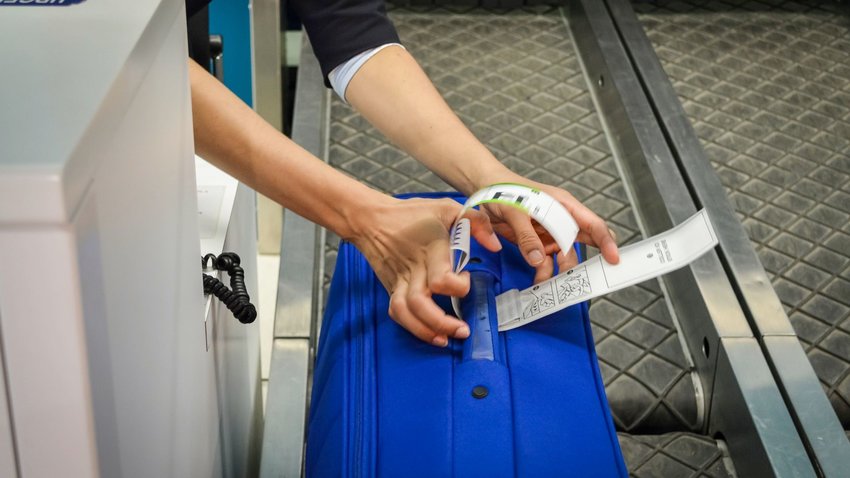
In a similar announcement on June 29, the Italian Aviation Authority said it, too, had concerns over passengers crowding in an aircraft’s narrow aisle to retrieve bags stored in the overhead lockers. A total ban on the use of overhead bins now applies to those flights not employing other social distancing measures. National carrier Alitalia responded by saying that it would carry items in the hold free of charge, but many will fear standing in close proximity to others at the baggage carousel.
Optimize The Space You Have
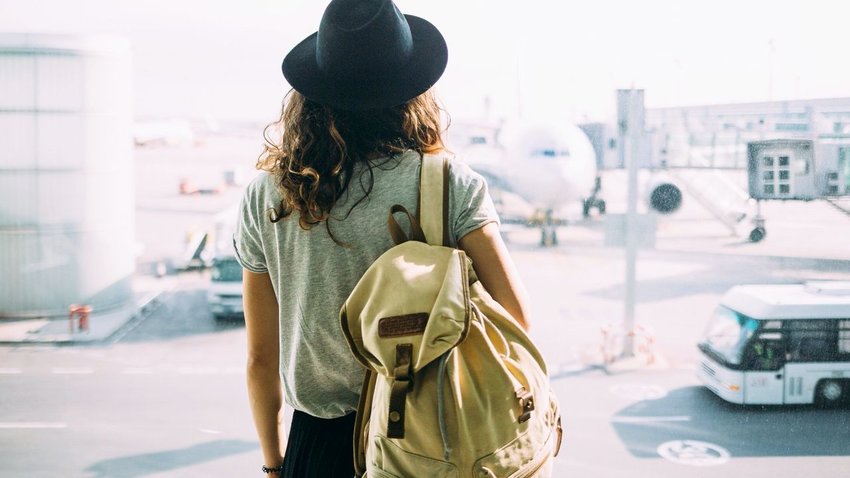
While we might understand where the UK and Italian authorities are coming from, that doesn’t mean we necessarily want to be burdened with hold luggage and the disadvantages that brings. With this in mind, optimising the space in your under seat carry-on has never been more important. To fit everything you need, no inch of that bag can be wasted. Yet, it needs to work for you – your things need to be accessible as and when you need them.
One of the easiest ways to do so is through the use of packing cubes. Hardened backpackers and thrifty travellers may cry that they are an unnecessary extravagance, citing plastic bags as a significantly cheaper alternative. But many countries have woken up to the environmental damage caused by casually discarded plastic leading some, such as Tanzania and Kenya, to ban plastic bags entirely.

Instead of flimsy plastic bags, packing cubes are your ticket to packing an under-seat bag like a pro. Typically, they come in sets: larger bags for clothing, smaller bags for tech, toiletries and anything else you’ll need to hand. Thanks to their limited size, they force you to be strict with yourself about what you actually need to take, as opposed to what you’d like to take. Lay items out before you start to pack, stick to a capsule wardrobe, and roll clothes to save space. For longer trips, you can also consider compression cubes that use a double zipper function to squeeze air out, though you might need to borrow an iron once you reach your destination as creasing is common.
How to use your packing cubes
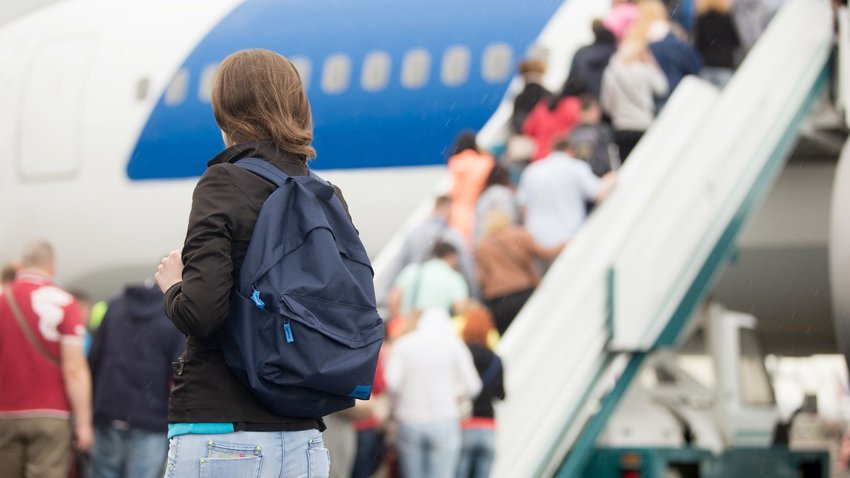
Before you set off, select a bag that will fit comfortably under the seat in front of you once you get on the plane. Typically, a soft-sided backpack or a small duffel bag works best, as it’s easier to squeeze under the seat, and more comfortable to tuck your feet alongside. Fill your largest packing cube with the items you won’t need at the airport or during the flight, such as clothing and place it at the bottom of your bag. Even if you didn’t get a compression cube, zipping up your packing cube over all of your soft clothes should provide a bit of compression, and free up more space in your bag for everything else.
On top, pack several smaller cubes. Reserve one cube for your liquids and toiletries (or even better, get a dedicated toiletry kit). If you go the packing cube route, getting a transparent one like these from Amazon can save you time in the security line. Another small cube should contain your documents, any valuables and also prescription medication you’ll need on your trip. If you’re unexpectedly asked to check your bag – even a small one – this cube can simply be lifted out and carried on board with you.
Three more things to consider when choosing your packing cubes:
1. How far they open
Some packing cubes have a half-zip, others, like these from Eagle Creek, open fully. It is much easier to retrieve your belongings if you can access the whole of the packing cube rather than simply the top half. Getting rid of the need to rummage will keep your belongings tidier.
2. How often you’ll need to access them
If during your trip, you’ll be moving around a lot, having a greater number of packing cubes can come in handy, as you’ll have less to re-pack and can keep dirty laundry separate from unworn clothes. Conversely, if the flight is the only time you’re likely to need to get one of the cubes out of your bag, then one large cube could be sufficient.
3. How much space you’ll need for the return journey
Opt for packing cubes that collapse down and fold away to almost nothing if you plan to use more of them on the return leg of your journey. Simply pack one or more of them inside one of the larger cubes and fill it when you’re ready to come home – though make sure your bag has sufficient space for those added souvenirs.

